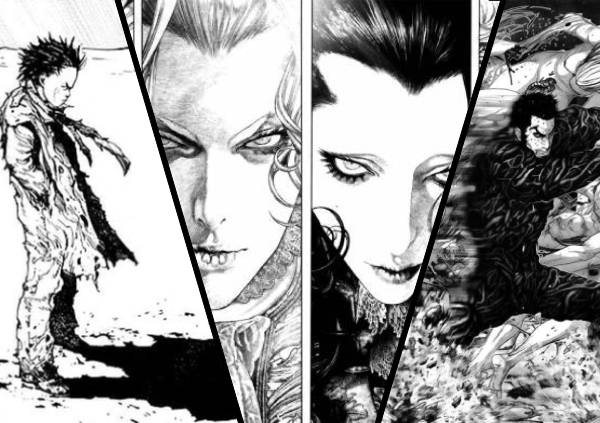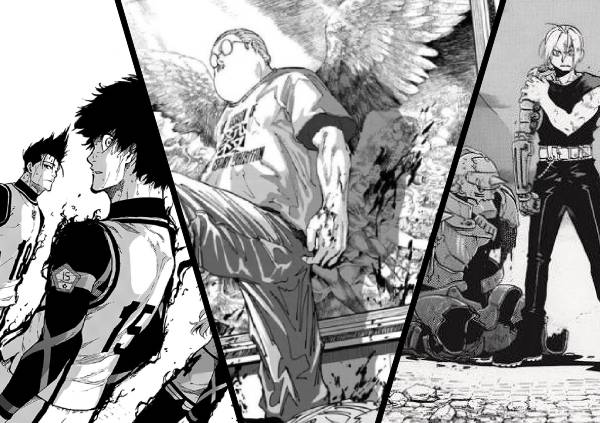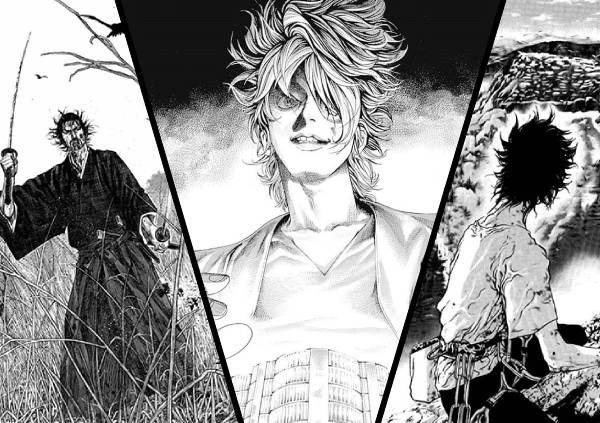I’m a huge fan of cyberpunk. There’s something about the clash between futuristic vision and gritty streets, the tension between high technology and low-life, and the philosophical questions that surface when man and machine blur. That’s why I’ve assembled a list of my favorite cyberpunk manga.
In this list, you’ll find everything from claustrophobic detective stories to sprawling post-apocalyptic epics. Some are foundational pillars of the genre; others are modern additions. All of them, at least to me, are worth your time.
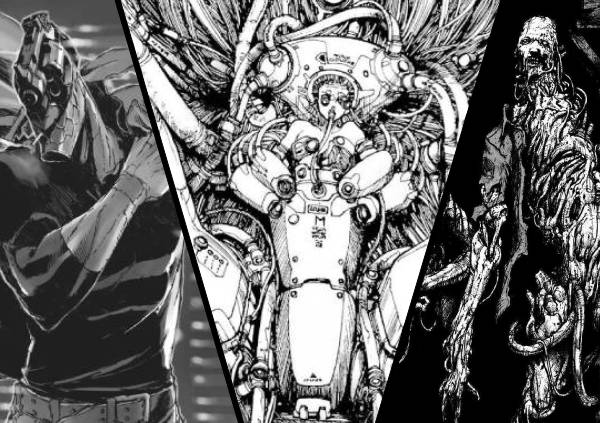
There aren’t a huge number of manga that lean hard into cyberpunk. Much of cyberpunk’s power lies in its unique visual and atmospheric identity: neon-drenched cityscapes, interfaces bleeding into flesh, and corporate towers casting shadows over broken streets. Yet among those who tread that ground, a few stand out.
From the gritty streets of No Guns Life to the impossibly vast, labyrinthine architecture of Blame!, from Akira’s Neo-Tokyo to Origin’s near-future ambiguity, this list offers a spectrum of cyberpunk tones and scales. Whether you’re drawn to corporate intrigue or existential machine horror, there’s something here across every tone and scale of cyberpunk.
Mild spoiler warning: I’ll try to avoid giving away major story beats, but some plot details are necessary for context.
Below is my ranking of the 11 best cyberpunk manga and what makes each title so compelling (last updated: October 2025).
11. Origin
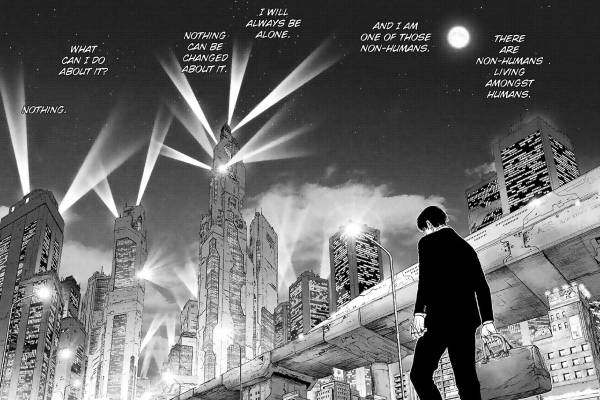
It’s the year 2048, and Tokyo has become the hub of a massive Eurasian railroad, linking the entire northern hemisphere. With that connection comes every form of crime and corruption imaginable. But beneath the neon sprawl lurks something worse: inhuman beings disguised as people. Among them is Origin, a prototype android who must conceal his own existence from humanity while hunting down his murderous siblings.
Boichi’s Origin is one of those rare cyberpunk manga that perfectly captures the genre’s high-tech, low-life ideals. It’s a story about identity, loneliness, and what it means to live among humans when you aren’t one yourself. Origin, our protagonist, spends much of the series trying to understand emotions, morality, and connection while performing his secretive duties. His logical thought process and machine-like detachment create both humor and melancholy.
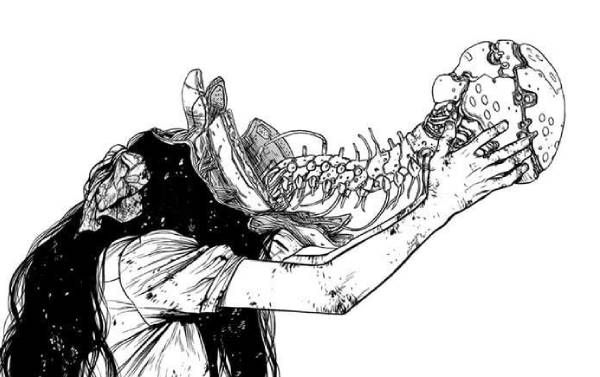
The series’ strongest element is Boichi’s art. His meticulous linework, intricate mechanical designs, and cinematic paneling bring his setting to life with staggering realism. Action sequences are fast, detailed, and fluid. Every clash of steel and synthetic flesh feels weighty. The more intimate moments, meanwhile, benefit from his photorealistic approach, giving the story an almost live-action look and feel.
Unfortunately, Origin is weighed down by Boichi’s more frustrating habits. The manga frequently derails into awkward fan service and tonal whiplash. It shifts from philosophical musings to exaggerated comedy or near-hentai shots. The female characters, while competently written, are often reduced to objectifying poses that distract from the atmosphere. Later arcs also lose narrative focus, and the rushed ending undercuts the thoughtful tone established earlier.
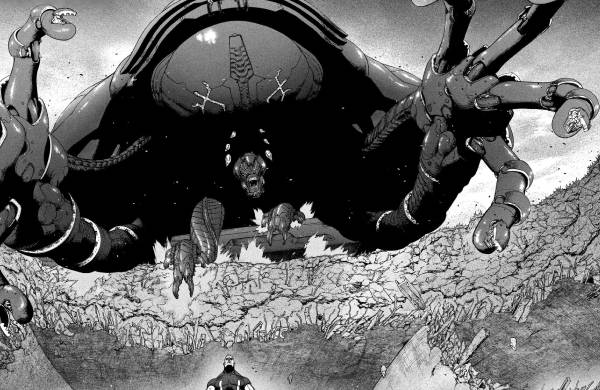
Despite these flaws, Origin remains a fascinating and visually stunning cyberpunk manga. It explores questions of humanity and artificial life through Boichi’s distinct lens, which is equal parts genius and excess. If you can tolerate the gratuitous fan service and occasional narrative chaos, you’ll find an unforgettable blend of hard science-fiction action and melancholic introspection.
Genres: Cyberpunk, Action, Sci-Fi
Status: Completed (Seinen)
10. No Guns Life
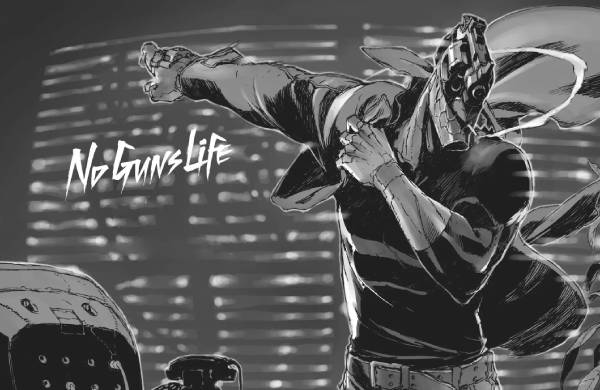
No Guns Life is a hard-boiled detective story that stands apart from the usual neon-drenched cyberpunk manga the genre is known for. Instead, it focuses on grimy, dimly lit hallways, smoke-filled clubs, and alleys where half-human, half-machine mercenaries struggle to survive.
The story follows Inui Juuzou, an Extended, whose head has literally been replaced by a revolver. Once a soldier, now a private investigator, Juuzou takes on odd jobs in a postwar city overflowing with mechanical outcasts. He’s assisted by Mary, a street-smart mechanic who keeps him patched up. Together they navigate the city under the shadow of Berühren, a powerful megacorporation responsible for much of the technology and suffering that defines their world.
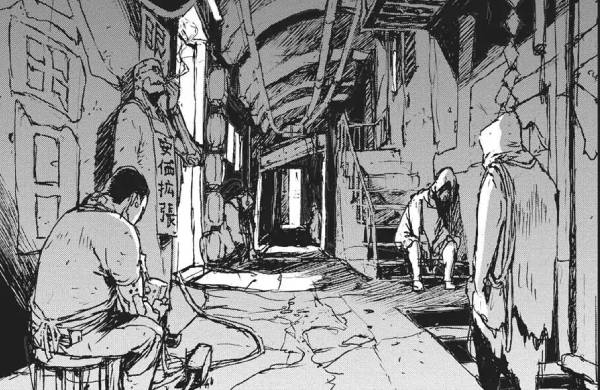
What makes No Guns Life special is its fusion of cyberpunk and noir. It’s less about massive futuristic skylines and more about claustrophobic interiors, flickering fluorescent lights, and surfaces covered in oil and grime. The result feels intimate, character-driven, and soaked in atmosphere. Juuzou embodies the archetypal noir protagonist: world-weary, moral in his own way, and haunted by his past. His strange design serves both as a visual metaphor and a psychological symbol for how a man turned into a tool of violence struggles to reclaim his humanity.
Karasuma’s artwork deserves special praise. Every page oozes with heavy contrast and industrial textures: metal limbs, stitched flesh, and shadowed streets are rendered in striking detail. The fight scenes can occasionally be chaotic, but when they land, they are stunning, full of brutality and kinetic motion. The creature and prosthetic designs give the manga a grotesque body-horror edge.
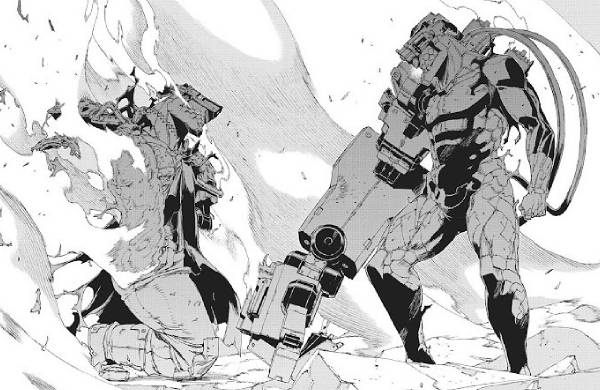
The storytelling can be episodic, drifting from one case to another, but that structure suits the noir tone perfectly. Each arc adds another layer to a larger mystery while letting Juuzou’s city breathe. It’s a world of broken soldiers, unethical science, and people who’ve forgotten the difference between metal and flesh.
No Guns Life may not reinvent cyberpunk manga, but it captures its soul and gives it a distinct, detective-noir edge.
Genres: Cyberpunk, Detective, Action
Status: Completed (Seinen)
9. Appleseed
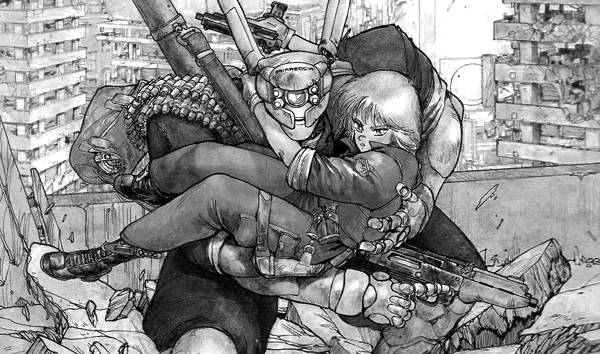
Before Ghost in the Shell cemented Masamune Shirow’s legacy as one of cyberpunk’s most influential creators, there was Appleseed. It’s a sprawling, ambitious, and occasionally chaotic vision of a postwar world. Originally serialized in the 1980s, it remains one of the earliest examples of cyberpunk manga, full of towering mecha, hybrid humans, and philosophical debates about the cost of utopia.
The story takes place in the 22nd century, after the Third World War left Earth in ruins. Amid the fallout, ex-SWAT operatives Deunan Knute and her cyborg partner Briareos are recruited into ESWAT, an elite unit serving the city of Olympus, a supposed utopia governed by advanced AIs and genetically engineered humans called bioroids. As the two uncover political conspiracies and power struggles beneath Olympus’s gleaming surface, it becomes clear that perfection is an illusion, and that even in a world built by machines, humanity’s flaws persist.
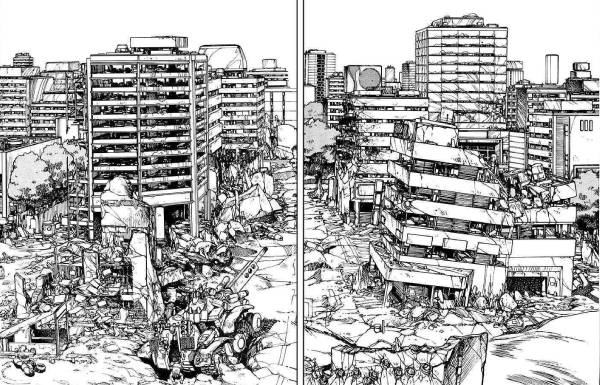
Appleseed is fascinating as a bridge between eras. You can already see the early sparks of the ideas Shirow would later refine in Ghost in the Shell: the fusion of philosophy and technology, the tension between human and artificial life, and the allure of digital governance. But here, those ideas come wrapped in a much more action-driven, militaristic package. Mecha battles, tactical missions, and high-tech showdowns dominate the page, balanced by moments of political intrigue and moral questioning.
Shirow’s art captures both the scale and density of his world. The mecha and cyborg designs are outstanding for their time: intricate, functional, and distinctly industrial. The paneling and shading, however, can be overwhelming during chaotic action scenes. The result is a manga that feels visionary one moment and impenetrable the next. Likewise, the storytelling swings between gripping and ponderous, weighed down by the occasional exposition and worldbuilding dumps that read more like manuals than dialogue.
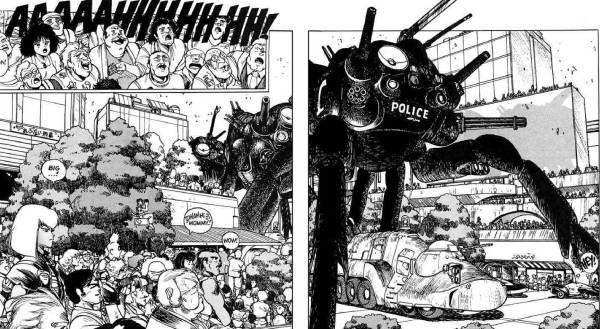
Despite these flaws, Appleseed remains a cornerstone of cyberpunk manga. It captures the optimism and paranoia of its era. It may be rough, but it captures Shirow’s developing genius, showing the early sparks that would later define one of the greatest science-fiction universes ever created.
Genres: Cyberpunk, Mecha, Action
Status: Completed (Seinen)
8. AD Police
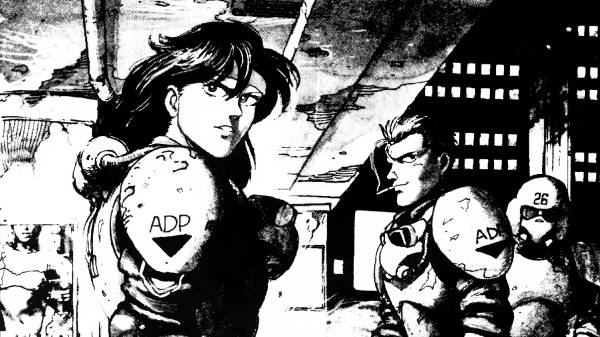
Bubblegum Crisis is one of my favorite anime of all time and the series that first pulled me into the world of cyberpunk. So I may be biased including its darker, grittier prequel, AD Police, on this list. This short cyberpunk manga might not have the flash and scale of Bubblegum Crisis, but it expands a fascinating world of rogue androids, collapsing urban infrastructure, and overworked law enforcement trying to keep the chaos contained.
Set in the futuristic city of MegaTokyo, AD Police follows a specialized police unit created to handle Boomer-related crimes. Boomers are sentient machines originally built for labor and security that frequently go berserk. Equipped with powered armor and military-grade tech, the officers of the AD Police walk the fine line between protector and destroyer, their operations often leaving entire blocks in ruins. The citizens they protect view them with suspicion, while the officers themselves battle cynicism, burnout, and moral decay.
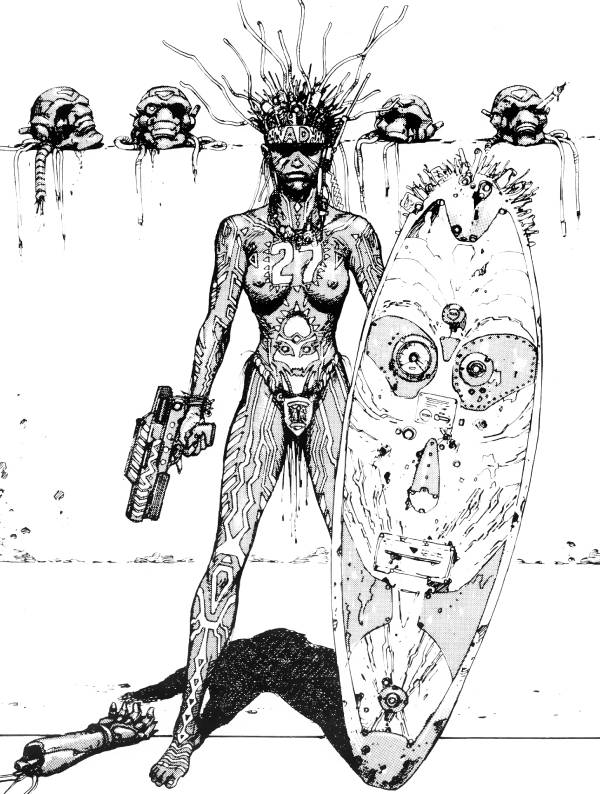
The manga comprises short, loosely connected cases that slowly build into a bigger narrative, one that questions humanity’s control over its own creation. The final act flirts with the idea of mechanical transcendence, as a rogue Boomer believes it can evolve into a god and liberate its own kind from human rule. It’s ambitious, but unfortunately, the series doesn’t have enough room to fully explore those ideas. At only nine chapters, it often feels like a teaser for something great.
Still, what’s there is strong. The tone is pure late-1980s cyberpunk, full of wide cityscapes and rain-slicked streets illuminated by neon lights. The art feels inspired by Akira, clean, kinetic, and slightly rough, giving MegaTokyo a sense of grime. The storytelling is tight, but unpolished, with action taking the place of character development. Yet within its nine chapters, AD Police captures a mood few other cyberpunk manga do. It’s the uneasy mix of fascination and fear toward technology that so defined the genre’s golden age.
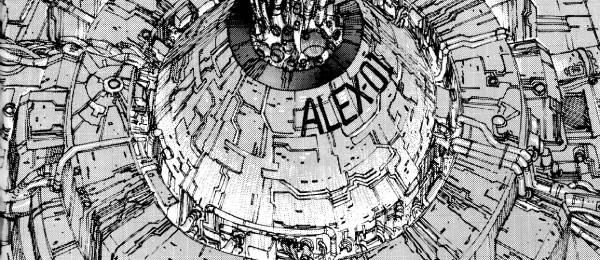
Even though it’s short and somewhat underdeveloped, AD Police remains a hidden gem for fans of Bubblegum Crisis and classic 1980s cyberpunk. It may be a brief read, but it’s a snapshot of the era’s obsession with machines, morality, and dystopia.
Genres: Cyberpunk, Action, Sci-Fi
Status: Completed (Seinen)
7. APOSIMZ
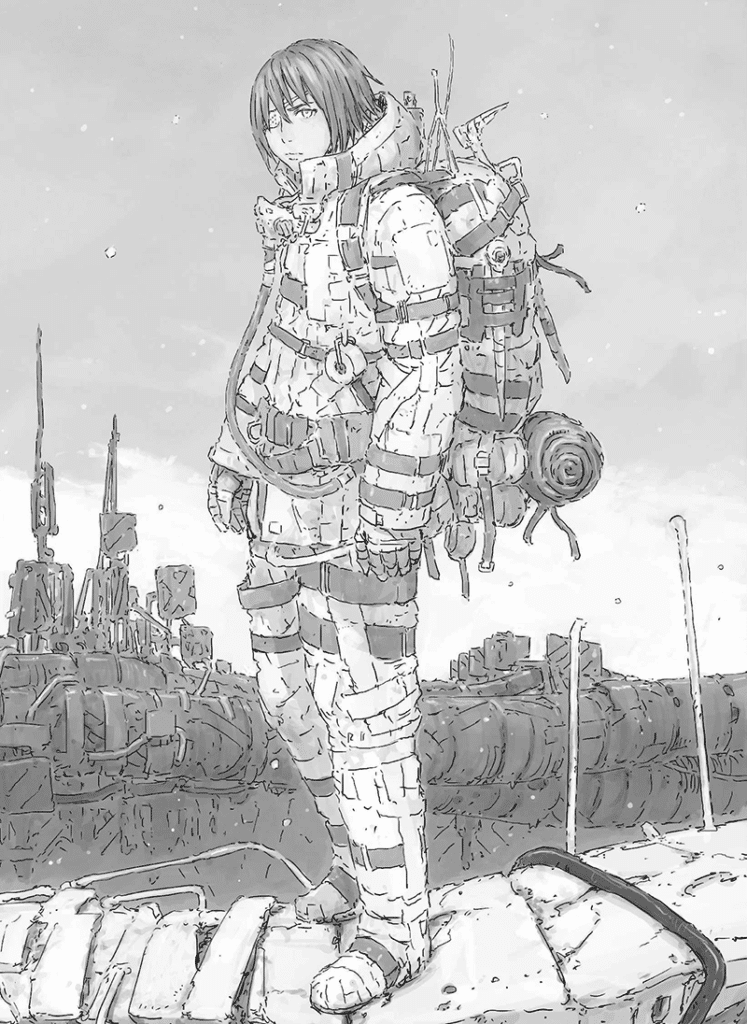
Tsutomu Nihei is one of my favorite mangaka, and few artists have shaped cyberpunk manga as profoundly as he has. Known for his works like Blame! and Knights of Sidonia, Nihei built a reputation for towering architecture, cryptic worlds, and stories where humans are dwarfed by impossible dimensions. Aposimz marks a fascinating evolution in his career, a continuation of his themes filtered through a starker, more minimalist lens.
Set on the artificial planet of Aposimz, the story unfolds after humanity’s catastrophic defeat by the world’s inner core. The survivors are forced to live on its frozen surface, surrounded by decaying ruins and mechanical horrors. In this wasteland, a young man named Etherow encounters Titania, a mysterious fugitive pursued by the Rebedoan Empire. His decision to help her destroys his village, leaves him mortally wounded, and ultimately transforms him into a cybernetic soldier known as a Regular Frame. From there, Etherow joins a rebellion that could decide the fate of the planet itself.
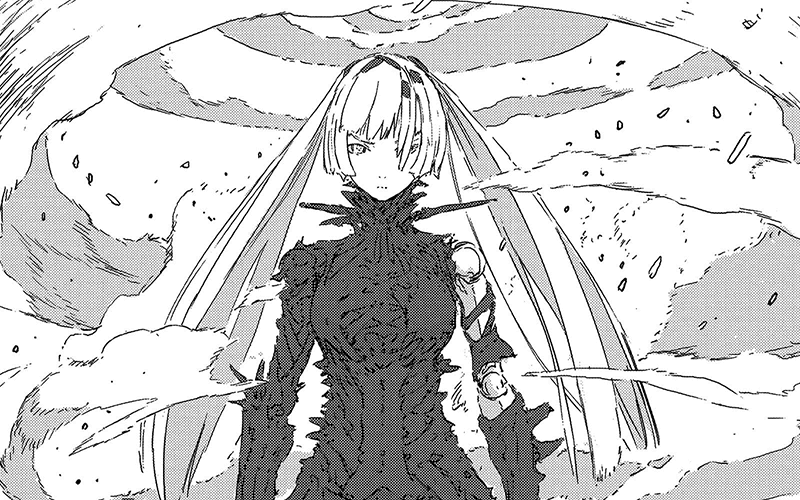
On the surface, Aposimz reads like a straightforward hero’s journey, but Nihei’s approach turns it into something almost mythic. Instead of the dense and dark interiors of Blame!, we find wide, white landscapes that stretch toward infinity. We bear witness to sterile snowfields, crumbling structures, and frozen remnants of civilization. The manga’s bleached aesthetic and deliberate pacing create a haunting, frozen sense of emptiness.
Visually, Aposimz is mesmerizing. The angular designs, cybernetic anatomy, and alien machinery are distinctly Nihei, but rendered with newfound clarity and restraint. This restraint makes the violence feel cold, almost ritualistic. Especially noteworthy is the contrast between the mechanical and organic, which gives the series a tone that borders on posthumanism.
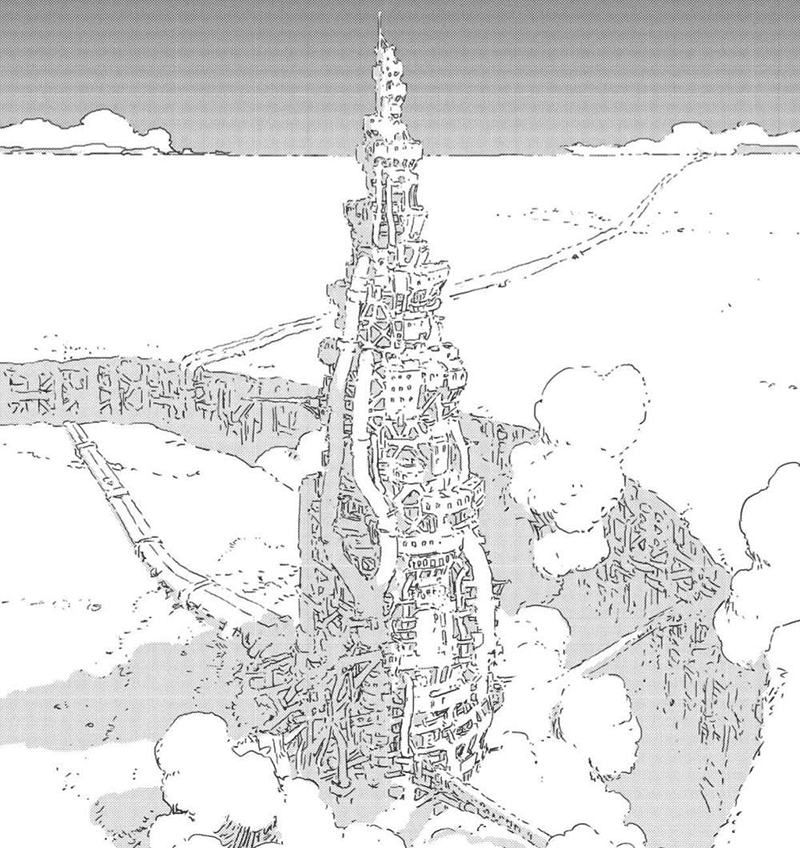
Narratively, Aposimz is more accessible than Nihei’s earlier works. It follows a clear plot and features more dialogue, but that accessibility comes with trade-offs. The characters lack the enigmatic depth of his former protagonists, and the story occasionally drifts toward shonen-style adventure. Yet even when the writing falters, the sheer imagination of Nihei’s world is entrancing.
Bleak, beautiful, and meditative, Aposimz stands as one of Nihei’s most visually distinct cyberpunk manga. It’s a story about survival after the end, and fragile remnants of humanity inhabiting it.
Genres: Cyberpunk, Sci-Fi, Action
Status: Completed (Shonen)
6. Ghost in the Shell
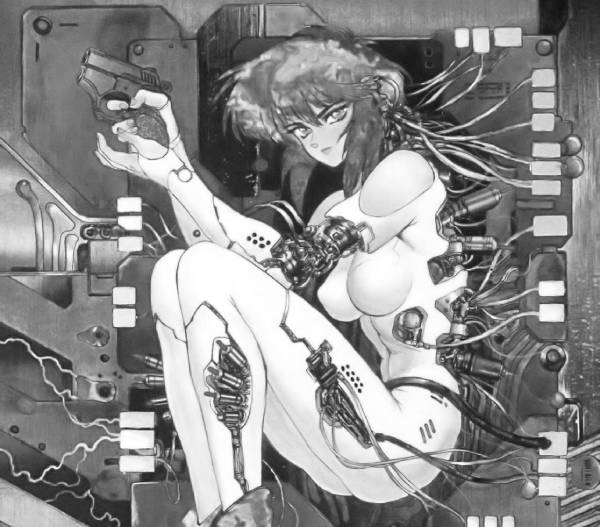
Ghost in the Shell isn’t just a staple of cyberpunk manga but one of its defining pillars that, standing alongside Akira in bringing Japanese manga and anime into global consciousness. The 1995 film adaptation is legendary, and one of the greatest anime of all time. Reading Masamune Shirow’s original work, however, offers an entirely different experience. It’s lighter, denser, and more playful in parts, but still full of the same deep questions about mind, machine, and self.
The story takes place in the year 2029. After four world wars, humanity has embraced cybernetics and networked consciousness. Bodies can be rebuilt, minds uploaded, and hackers can invade the deepest corners of your identity. In this world, Section 9 is a covert task force assembled to counter high-level cyberterrorism, rogue AIs, and political manipulation. Major Motoko Kusanagi, our protagonist, is a full-body cyborg with sharp wit, curious vulnerabilities, and an uncanny sense of self.
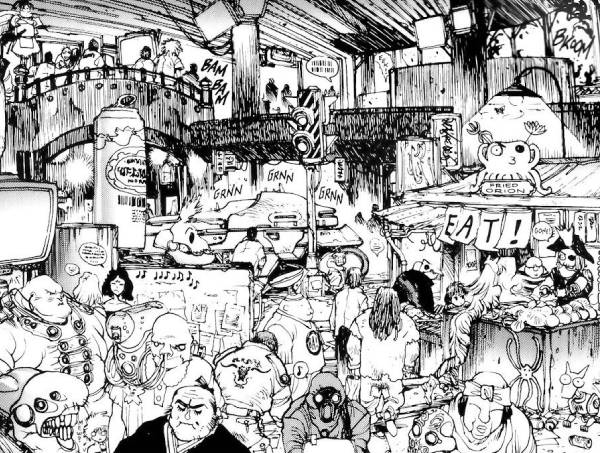
While the movie focuses on the mystery surrounding a criminal known as the Puppet Master, the manga is much more episodic. Many chapters are self-contained, detailing minor Section 9 operations often filled with philosophical musings or tech lore dropped mind-dialogue. Only as the series matures are more complex plot threads introduced, eventually culminating in the Puppet Master case and its existential revelations.
The art style is vintage, but full of character. Shirow leans heavily into detail, circuitry, crowded panels, and handwritten notes. The dense technological footnotes and elaborate interludes can slow readers down, but they also reveal how seriously Shirow approached his worldbuilding. Still, at times it feels like reading a science journal rather than a manga.
Tonally, the manga differs wildly from the solemn, atmospheric movie version. Motoko is witty, occasionally even cheeky. There’s more humor, more attitude, and a lighter touch, even during the more serious arcs. While some of the action sequences are great, many suffer from confusing layouts, making them feel jumpy, as though a panel or two were missing.
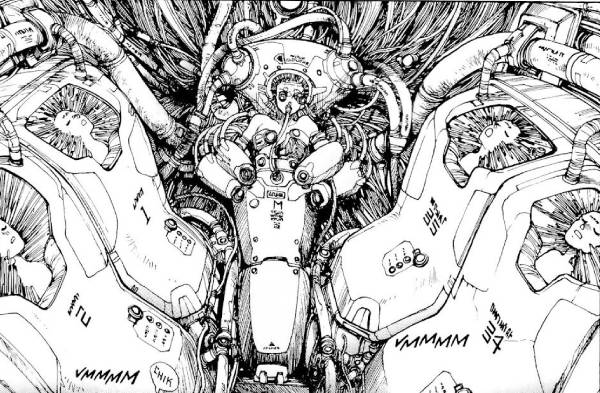
Still, Ghost in the Shell is a dense but rewarding work. Its philosophical core runs throughout the entire manga: what does it mean to be human when your body is replaceable, your mind linkable, and your memories mutable?
If you’re expecting the movie’s tone, you’ll be surprised. But approached as a sprawling, technocratic experiment that bends genre boundaries, Ghost in the Shell stands as one of the most important cyberpunk manga ever written, a cornerstone of both science-fiction and manga history.
Genres: Cyberpunk, Sci-Fi, Noir
Status: Completed (Seinen)
5. Eden: It’s an Endless World!
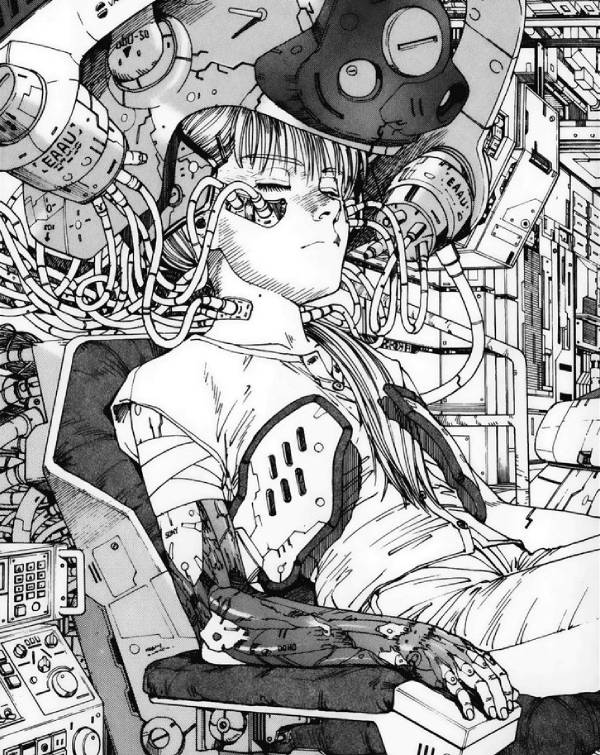
Hiroki Endo’s Eden: It’s an Endless World! is a cyberpunk manga that fully embraces everything the genre promises. It’s not just about technological dystopia, but the messy, deeply human struggles within it. Running from 1997 to 2008, Eden begins as a post-pandemic survival tale and transforms into a sprawling geopolitical and philosophical epic.
After a global virus wipes out much of humanity, a powerful organization known as Propater seizes control of the shattered world. Entire nations collapse under its influence. In the ruins, two children immune to the virus are raised in isolation, destined to become key players in the new order. Twenty years later, one of them has become a South American drug lord whose empire collides with Propater’s reach, setting off a chain of violence, rebellion, and revelations spanning continents.
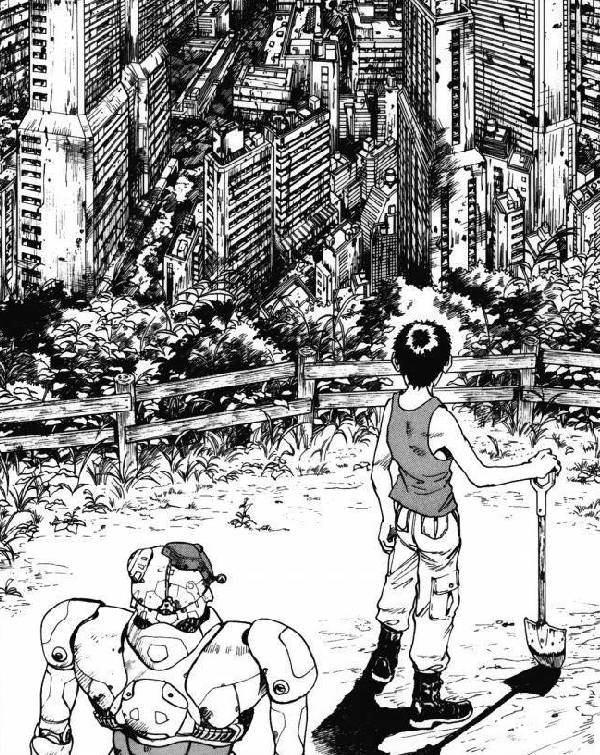
Endo’s storytelling refuses to stay in one lane. What begins as a cyberpunk revenge story expands into a discussion of religion, technology, and morality. The narrative shifts frequently from cartel foot soldiers to mercenaries, prostitutes, scientists and idealists, yet all of them remain bound by the same broken system. Endo’s world is also frighteningly real: governments are ruled by shadow organizations, cities rotting from corruption, and machines that both liberate and enslave.
Despite its futuristic setting, Eden is ultimately about people. Its characters are flawed, sometimes reprehensible, but always compelling. Endo portrays violence and sex not as spectacle, but as raw, unsettling truths about survival. His art reflects this duality: elegant yet brutal, grounded in anatomy and expression rather than exaggeration. Few manga capture physical pain or emotional exhaustion with such precision.
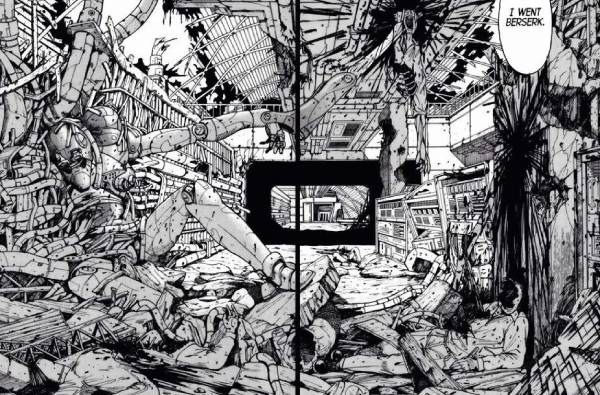
There’s also an undercurrent of spirituality. Endo draws loosely from Gnostic mythology, using it as a mirror for his characters’ attempts to find meaning in a collapsing world. It’s heavy thematic material, which is handled with surprising care and warmth. Even in its darkest moments, Eden finds room for humor and connection.
Eden: It’s an Endless World! stands as one of the most cohesive and rewarding cyberpunk manga ever written, a vast, unflinching, and resolutely adult exploration of technology, faith, and transcendence.
Genres: Cyberpunk, Sci-Fi, Psychological, Drama
Status: Completed (Seinen)
4. Battle Angel Alita
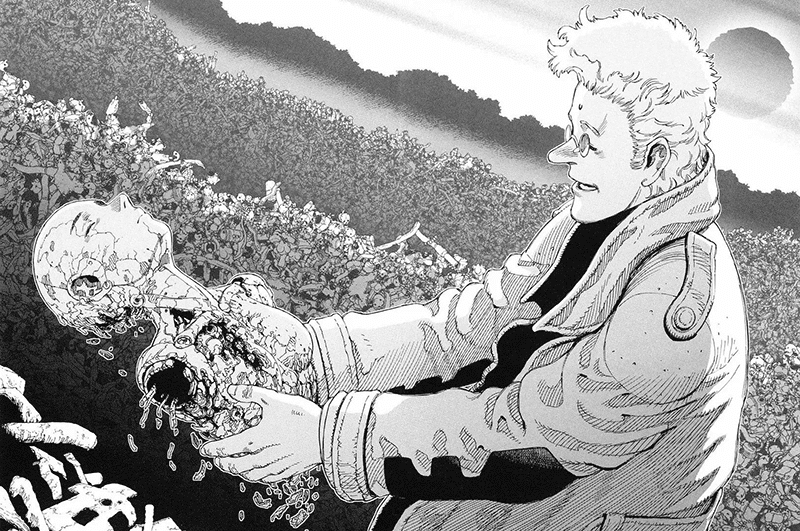
Yukito Kishiro’s Battle Angel Alita stands as one of the cornerstones of cyberpunk manga. It’s a work that balances adrenaline-fueled combat with an intimate search for identity. Serialized throughout the early 1990s, this cyberpunk manga fuses gritty, post-apocalyptic worldbuilding with a tragic yet defiant human core, embodying everything the genre represents.
The story begins in the Scrapyard, a sprawling industrial town built from debris and junk. Dr. Ido, a cybernetics engineer scavenging for parts, discovers the remains of a destroyed cyborg girl. He rebuilds her, naming her Alita. With no memories, she begins as a naïve and innocent girl but gradually hardens into a warrior who must fight to define her own purpose.
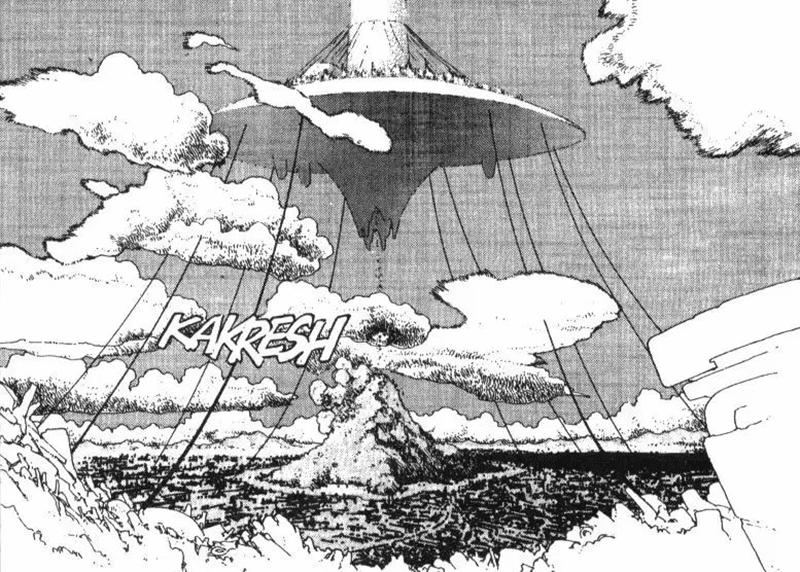
Kishiro’s setting is pure cyberpunk: neon smog and rusted iron, streets full of scavengers and bounty hunters, and above it all, the floating city of Zalem, a cold paradise that literally hangs above the suffering below. The result is a layered world that feels both fantastical and eerily plausible.
The action in Battle Angel Alita is spectacular. The Motorball arc alone is a masterclass in kinetic storytelling. Kishiro’s art captures both momentum and violence with remarkable precision. His mechanical designs, equal parts grotesque and elegant, turn every battle into a display of imagination and brutality.
Yet beneath it all, Alita is deeply human. Her relationship with Dr. Ido grounds the story, evolving from paternal affection into a philosophical conflict about freedom, morality, and the right to self-determination. As Alita gains strength, she also gains independence, and questions what it truly means to be alive.

The early volumes can be rough around the edges: faces are exaggerated, proportions are inconsistent. As the series progresses, however, Kishiro’s artwork matures into something exceptional. It’s tight, confident, and cinematic in its choreography.
Over three decades later, Battle Angel Alita remains one of the defining cyberpunk manga of all time, a brutal, beautiful, and tragic story about reclaiming humanity in a world that’s forgotten it.
Genres: Cyberpunk, Sci-Fi, Action
Status: Completed (Seinen)
3. Biomega
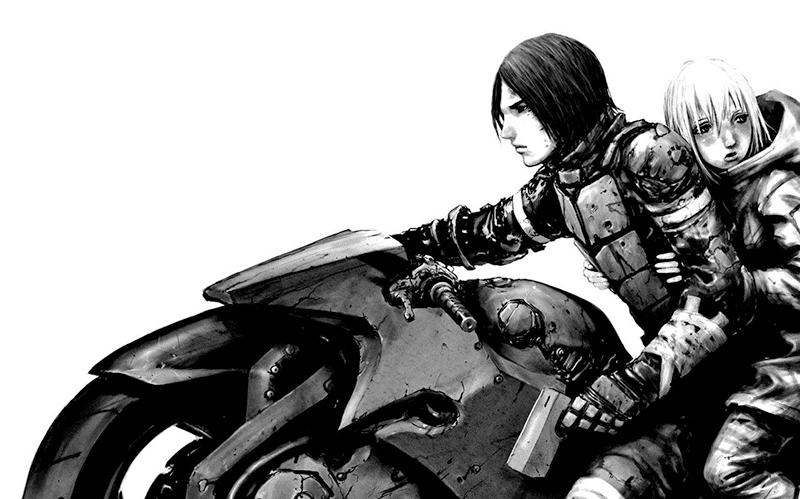
Tsutomu Nihei’s Biomega is a cyberpunk manga that feels like a fever dream. Equal parts zombie horror and transhumanist odyssey, it’s one of the most striking manga of the 2000s, and arguably Nihei’s most kinetic work.
The story follows Zouichi Kanoe, a synthetic human sent by TOA Heavy Industries to retrieve a girl immune to the N5S virus, a pathogen that turns its victims into grotesque biomechanical drones. With his AI companion Fuyu Kano, Zouichi rides across a ruined Earth on a weaponized motorcycle, navigating collapsing megacities while battling corporate armies and cybernetic horrors.
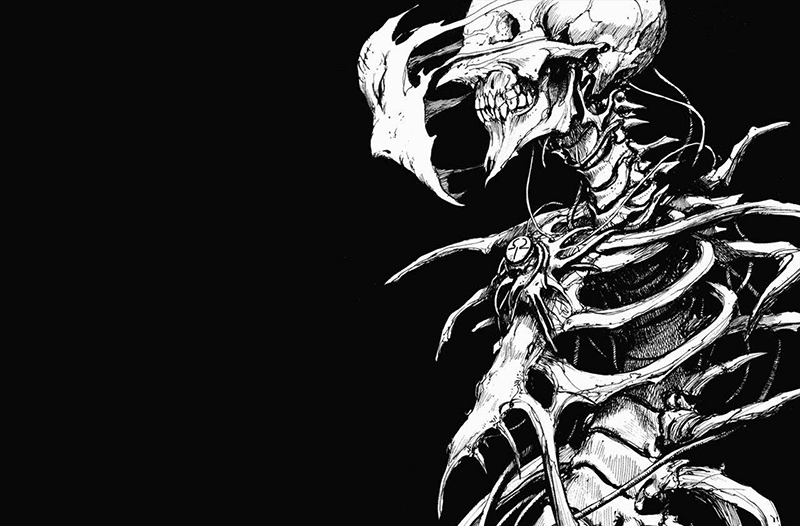
From its opening pages, Biomega moves at breakneck speed. The first half is pure momentum. It’s a relentless chase propelled by Nihei’s trademark visual storytelling and sense of scale. Entire pages unfold without dialogue, with panels expanding into vast architectural madness that makes humans feel microscopic. Every bullet, every transformation, and every impact hits with a precision few artists can match.
The infected drones, which are half-machine, half-rotting corpse, showcase Nihei’s fascination with decay. His cyberpunk worlds are never sterile but corroded, broken, and mutating out of control. This blend of mechanical and organic turns Biomega from a science-fiction thriller into something more akin to a transhumanist nightmare.
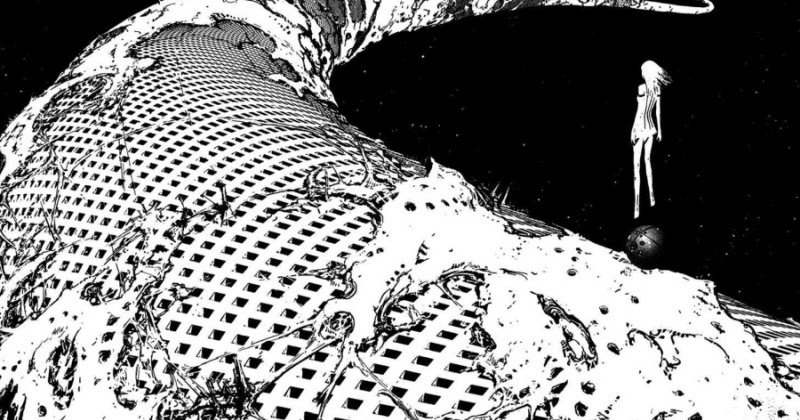
Then, midway through, Nihei changes everything. The relentless action gives way to something slower, stranger, and more contemplative. Biomega evolves into a biopunk epic, almost mythic in tone, trading screen-filling explosions for surreal landscapes. This shift is abrupt enough to feel like Nihei decided to start an entirely different work. Yet, within this chaos lies the manga’s unique charm. Biomega is a fever dream, one unbound by conventions or rules, pushing the cyberpunk genre further than any other work that came before.
Admittedly, some story threads vanish, characters disappear without explanation, and the finale feels rushed. Yet even with these flaws, Biomega stands out as an audacious experiment in form, rhythm, and scope. It’s a dark, messy, and unforgettable high-velocity plunge into a cyberpunk world unlike any other.
Genres: Cyberpunk, Sci-Fi, Horror
Status: Completed (Seinen)
2. Akira
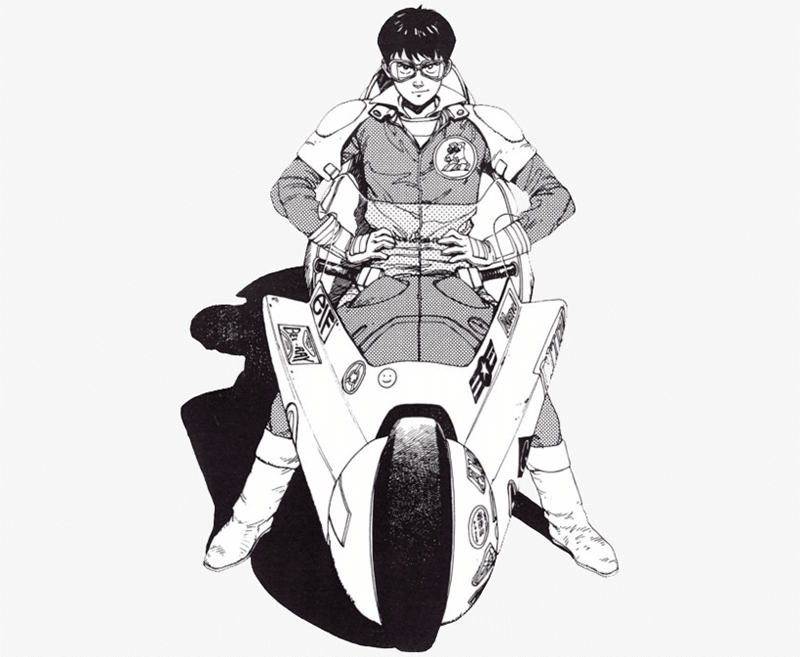
If there’s one cyberpunk manga that defines the genre, it’s Akira. Katsuhiro Otomo’s monumental work didn’t just influence Japanese manga; it redefined how the world visualized the future. Alongside Ghost in the Shell, it marks the genre’s peak. Yet, where Ghost in the Shell dives into technology, identity, and philosophy, Akira does something entirely different. It’s a feverish dystopian epic about rebellion, psychic power, and collapse.
Set in Neo-Tokyo, a sprawling metropolis built on the rubble of Japan’s former capital, Akira drops readers into a world of biker gangs, corrupt politicians, and secret military experiments. Society teeters between decay and control, and at its center are two teenagers: Kaneda and Tetsuo. They are inseparable friends whose bond is shattered when Tetsuo’s latent psychic powers awaken after a freak accident. What begins as street brawls in a neon wasteland soon spirals into government conspiracies and the awakening of a godlike being buried beneath the city.
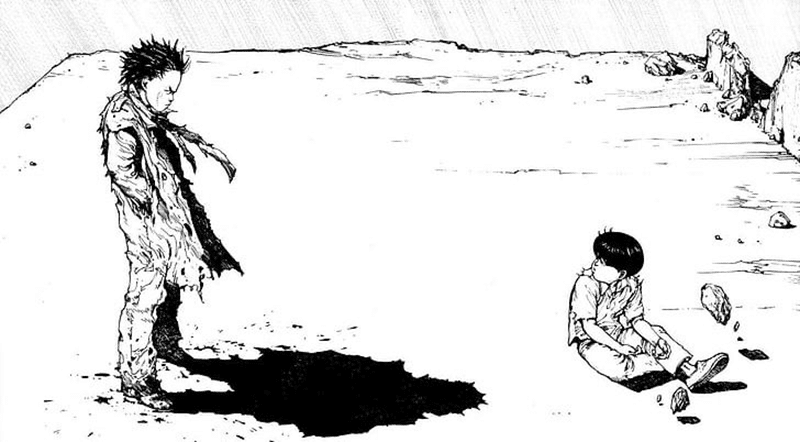
From its opening panels, Akira is an overwhelming sensory experience. Otomo’s Neo-Tokyo feels real in every sense: cracked asphalt, tangled cables, and graffiti-stained walls. His attention to architectural detail is legendary. Every building, vehicle, and explosion is rendered with obsessive precision, and the destruction scenes in later volumes remain unmatched in scale.
Character-wise, Akira leans more on archetypes than introspection. Kaneda is a punk hero defined by pure charisma and impulse, while Tetsuo, his tragic mirror, embodies human fragility twisted by unimaginable power. Their clash drives the story’s emotional and thematic core. The supporting cast of revolutionaries, soldiers, and scientists expands the scale, but rarely steals the spotlight.
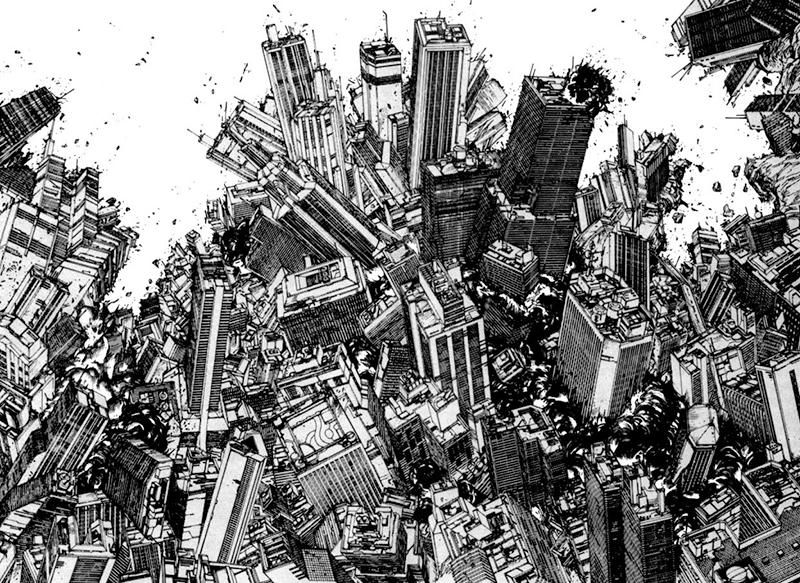
What keeps Akira timeless isn’t realism but raw energy. The manga operates on momentum rather than explanation. Psychic warfare, riots, coups, and citywide annihilation are all presented with a manic rhythm. Otomo’s storytelling feels closer to a visual symphony than a traditional narrative. It’s chaotic, yet meticulously composed. Even when coherence bends under the sheer weight of spectacle, you’re too entranced to care.
Revisiting Akira today feels like opening a time capsule from the 1980s. It’s a rare work full of youth rebellion, nuclear fear, and mistrust of authority, all expressed through the lens of cyberpunk manga. Decades later, it still radiates its rare kind of power.
Akira isn’t just a great cyberpunk manga; it is the cyberpunk manga. Monumental, operatic, and endlessly imitated, it remains a cornerstone of both science-fiction and the manga medium.
Genres: Cyberpunk, Dystopian, Action
Status: Completed (Seinen)
1. Blame!
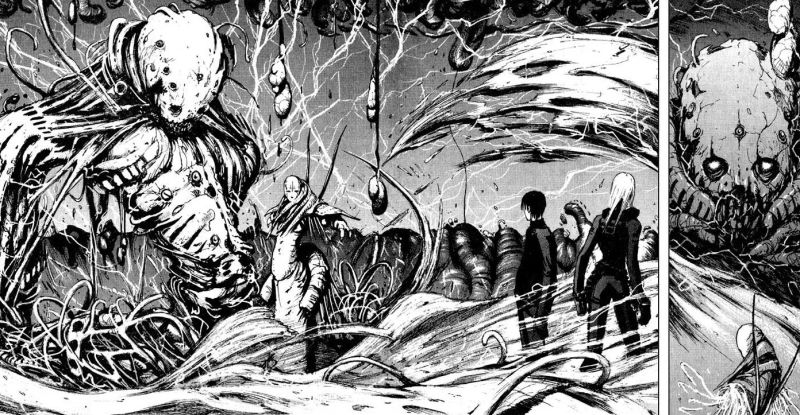
If Akira and Ghost in the Shell defined the birth of cyberpunk, Tsutomu Nihei’s Blame! marked its evolution. It’s the point where the cyberpunk genre transcends dystopian cityscapes and crosses into the realm of cosmic nihilism. Released in the late 1990s, long after cyberpunk’s 1980s boom, Blame! reimagines what the genre could be: not just a vision of a decaying society, but a universe that has outgrown humanity entirely.
The story follows Killy, a silent, gun-toting wanderer moving through the endless labyrinth known simply as The City. His mission is to search for a human with the Net Terminal Gene, a genetic key that could reconnect what’s left of mankind with the Netsphere and restore some semblance of control over the world’s technology. But Nihei’s genius lies in how little he tells you. The narrative unfolds through visuals, through atmosphere and architecture rather than exposition.
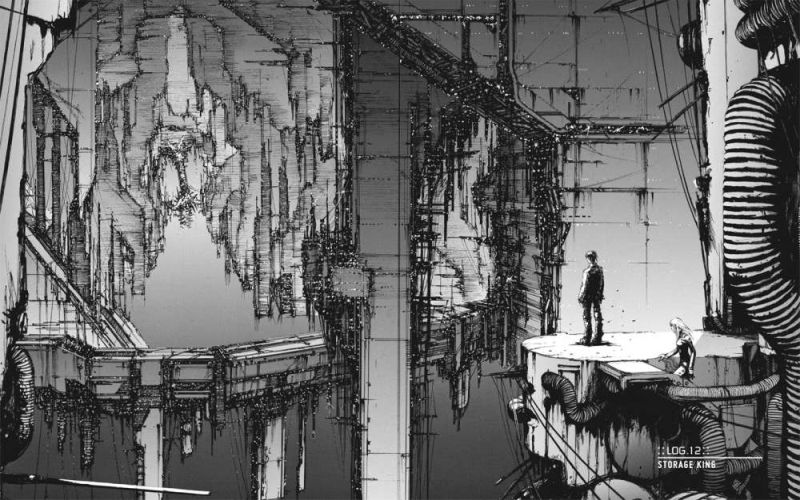
The City itself is one of the greatest achievements in manga worldbuilding. It’s an infinite, self-expanding megastructure stretching beyond comprehension, with walls the size of continents, voids deeper than oceans, and corridors that never end. Nihei’s panels often reduce Killy to a single speck swallowed by the impossible scale. It’s awe-inspiring, alien, and terrifying.
The inhabitants of this nightmare are no less memorable: biomechanical entities, deranged cyborgs, Builders who continue expanding The City, and the relentless Safeguard. Each design fuses machinery, flesh, and abstraction into something beautiful and grotesque.
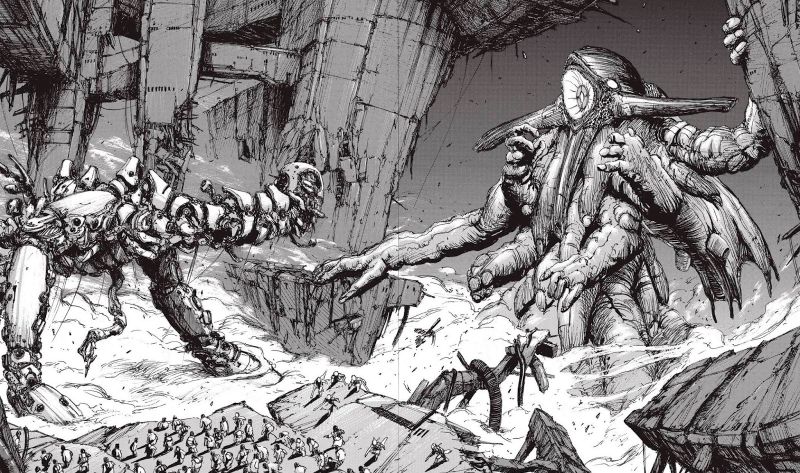
Dialogue in Blame! is minimal, and emotion comes through composition and seldom through speech. Killy’s expression rarely changes, yet his determination never wavers. When violence erupts, it’s sudden and cataclysmic. Killy’s iconic Gravitational Beam Emitter doesn’t just kill; it eradicates. These bursts of destruction contrast perfectly with the long stretches of silent exploration, reinforcing the loneliness and futility that define the manga.
Where Akira gave us revolution and Ghost in the Shell gave us philosophy, Blame! offers something colder: a vision of the future where humanity is entirely irrelevant. It’s a cyberpunk manga reinterpreted as cosmic horror, stripped of politics and emotion until only scale, silence, and entropy remain.
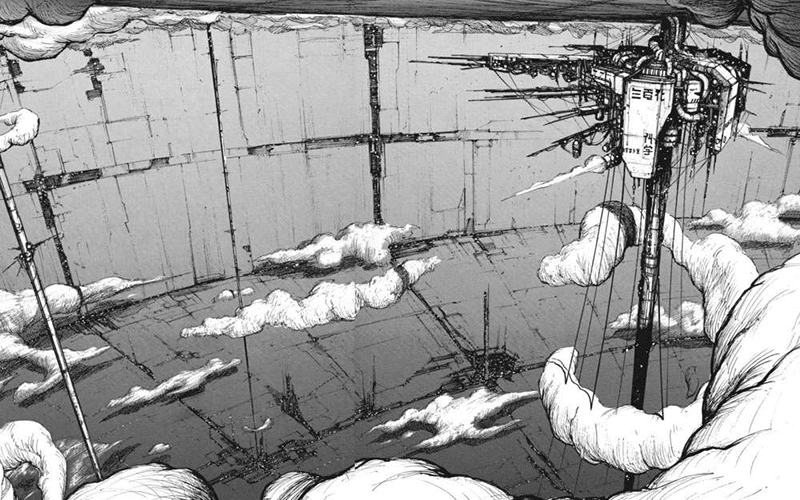
Few works capture that feeling of existential smallness so perfectly. For me, Blame! isn’t just one of the best cyberpunk manga; it’s one of the greatest manga ever created. It’s a stark, monumental journey through architecture and annihilation.
Genres: Cyberpunk, Sci-Fi, Horror
Status: Completed (Seinen)
